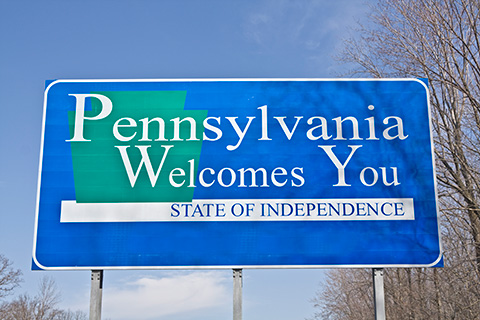Garden State Trust Company has been granted permission to provide our services to Pennsylvanians, and we are excited about the prospect. Although Pennsylvania has many nicknames, the most well-known may be as the Keystone State. A keystone (or capstone) is the part of an arch that is needed to keep the other stones from falling down, and the last piece of the puzzle to be placed in position.
Pennsylvania may have gotten that nickname from its role in the political position and signing of important documents, its geographic location, or its economic role in having supporting both industries from the north and south. Whatever origin story we think of, its great history and continued contributions make it quick and easy to understand why it’s still considered the Keystone State.
What may be harder to understand, is why a keystone is needed and how arches work in the first place.
This Britannica article, about the Arch provides a great summary and explanation that may leave many of us still mystified by this ancient technology. Here are some simplified key points:
Biggest benefits: As opposed to horizontal beams, arches can be made from small blocks of stone or bricks that are easier to transport and can carry a much greater load of weight.
Imagine downward pressure from gravity and weight with a horizontal beam across two columns. The weight isn’t all in the middle, but neither is it all going down into the columns. The beam has to be strong enough to support the weight that isn’t being redirected into the columns and then into the ground or foundation. The reason that an arch can hold more weight is because of how that force is being redirected by the wedge structure of blocks. The pressure from the weight pushes the stones against each other, reinforcing the structure by creating diagonal force that’s then redirected into the columns or foundation. The Keystone is the last piece added in the center that locks everything in position so it can start handling that pressure.
If you think that’s not cool enough, you might feel differently when you try to build one with your children or grandchildren out of sugar cubes. Here’s a how-to guide on how.
At Garden State Trust Company, we’re not masons or architects, but we do find the structure underlying how things work fascinating. By having all these smaller pieces working together, interlocking, more can be achieved. We think that needs to be done for proper wealth management too.
We’re proud to be fiduciaries, and act as trustees who are held to the highest legal standard. We always need to put our client’s interests first. To do so, we also create an arch that’s comprised of many different small duties that all support each other and push each other to create a solid holistic wealth management structure.
They are all set in place so they could bear weight and be held together with the Duty of Loyalty as the Keystone, and legally obligates us to perform many other specific duties. Here are some of the other duties that comprise the arch we build for our clients:
- Duty to administer a trust by its terms. Every trust agreement should make plain the purposes of the trust, as they provide the critical benchmarks for evaluating the trustee’s actions.
- Duty of skill and care. A high standard of performance is required, even if an amateur is named who has no prior experience as a trustee.
- Duty to give notices. Notices may concern legal rights of the trust beneficiaries, such as a power to make withdrawals, or they may cover such ministerial matters as designating a successor trustee or an agent to assist in trust administration.
- Duty to account. A written accounting of the assets, liabilities, receipts and disbursements of the trust must be provided to the beneficiaries regularly.
- Duty of impartiality. The trustee must not favor one beneficiary over another, unless the trust document directs that providing for a particular beneficiary is a principal purpose of the trust.
- Duty to invest. Trust assets must not be left idle. In addition to making the trust investments, the trustee has a duty to diversify the investments and develop an asset allocation plan. This is a job for professional investors or corporate fiduciaries.
- Duty of confidentiality. Normally, the terms of a trust, the identity of its beneficiaries and their respective interests, and the nature of the trust assets cannot be disclosed to anyone except the beneficiaries and those who need such information in order to be able to administer the trust.
We look forward to providing our services to Keystone residents, and becoming a supportive structure for their families and communities.





